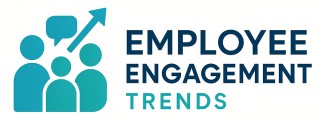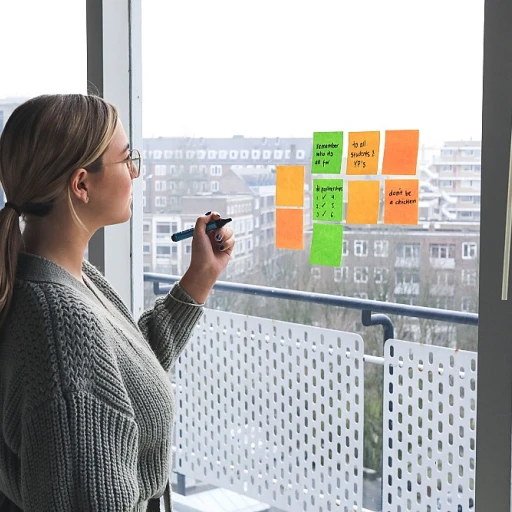
Understanding the Importance of Employee Engagement
In today’s pharmaceutical industry, employee engagement is more than just a buzzword; it's a crucial component for the success and sustainability of pharmaceutical companies. With growing regulatory requirements and rapid advancements in the field, maintaining high levels of employee engagement is essential for ensuring top-notch quality and compliance.
The foundation of employee engagement lies in fostering a work environment where pharma employees feel valued, motivated, and aligned with the organization’s goals. Engaged employees are not only more productive but also demonstrate a stronger commitment to organizational success, ultimately leading to improved business outcomes.
In the life sciences sector, the importance of proactively enhancing employee engagement becomes even more apparent due to the intricate nature of the work and the need for high levels of accuracy and knowledge. Dissemination of continuous learning opportunities ensures that pharmaceutical professionals are equipped with the latest skills and best practices to meet the evolving demands of the industry.
Fostering engagement through effective onboarding can be particularly impactful in setting the stage for strong integration into the company's culture and objectives. By implementing robust training programs and well-structured training content, companies can ensure that employees quickly gain the necessary knowledge and skills to thrive in a demanding environment.
Challenges in Employee Engagement within Pharma
Identifying the Unique Challenges in Pharmaceutical Engagement
The pharmaceutical industry is rife with challenges that can hinder effective employee engagement. A distinctive aspect of this field is the constant demand for regulatory compliance and adherence to stringent quality standards, which can sometimes overshadow the human element of work. Pharmaceutical companies, with their focus on compliance, may inadvertently foment environments where employees feel more like cogs in a machine rather than valued professionals.- High-Stakes Environment: The stakes are exceedingly high in the pharmaceutical industry. Employees are deeply aware that their work impacts the health and well-being of countless individuals. Such pressure can lead to burnout if not carefully managed with thoughtful employee engagement strategies.
- Dynamic Regulatory Requirements: Pharma employees must stay abreast of evolving regulatory requirements. Continuous learning is imperative, yet the pressure to remain compliant can overshadow opportunities for professional development, fostering disengagement rather than commitment.
- Complexity of Knowledge: In the realm of pharmaceuticals, the knowledge base professionals need is vast and ever-changing. Keeping pace with medical advancements and integrating new skills can be daunting, especially when learning and development initiatives are not prioritized.
- Limited Personal Growth Opportunities: With companies heavily focusing on adherence to compliance, investment in employee-centric initiatives such as human resources and professional development can take a backseat.
- Cultural and Structural Challenges: Larger pharmaceutical companies may have entrenched organizational structures, making it difficult to implement agile and flexible engagement strategies that can respond to individual employee needs and aspirations.
Role of Learning and Development in Engagement
The Intersection of Learning and Engagement
In the fast-paced realm of the pharmaceutical industry, professionals frequently confront evolving challenges and regulatory requirements. Continuous learning and development serve as essential components to enhance employee engagement across pharmacy companies. It is imperative for organizations to understand how their training programs can directly impact engagement and foster a productive work environment.Aligning Training with Organizational Goals
For learning initiatives to bolster engagement effectively, they must be radically aligned with the companies' goals and the specific needs of their employees. Pharmaceutical professionals need training content that not only elevates their knowledge but also supports compliance with industry standards. By tying learning outcomes to organizational objectives, pharma companies can ensure that employees grasp both broad company missions and their personal contributions within the enterprise.Comprehensive Skill Development
Engaging employees through development opportunities involves a holistic approach. Training efforts should encompass skill enhancement, knowledge acquisition, and professional development. Such programs invigorate cognitive engagement and encourage employees to apply learning to real-world scenarios within the pharmaceutical industry. This approach nurtures their growth and helps them to master the intricate details of medical and regulatory landscapes.Customized and Adaptive Learning Experiences
Learning environments should be tailored to meet the diverse needs of pharma employees. Adaptive training programs ensure the relevance and applicability of content, fostering an engaging learning journey tailored to the individual's pace and style. Such customization forms the backbone of effective employee training, allowing professionals to gain insight and proficiency in complex areas fundamental to quality management and life sciences. For an insightful exploration of how structured learning can amplify engagement, visit enhancing employee engagement through structured learning. Assessing the impact of these learning initiatives enables organizations to refine their strategies further and commit to a long-term vision of excellence in learning development.Innovative Learning Strategies for Pharma Employees
Adopting Innovative Strategies for Training and Development
In the pharmaceutical industry, fostering employee engagement through continuous learning and development is crucial. With regulatory requirements and the dynamic nature of life sciences, implementing innovative strategies for training can enhance knowledge retention and application.1. Adaptive Learning Platforms: These platforms offer personalized learning experiences based on employees' skill gaps and progress. By tailoring content to individual needs, pharmaceutical professionals can grasp complex medical and compliance topics more effectively. This results in improved quality outputs and adherence to best practices.
2. Gamification in Training: Introducing gaming elements in training programs can make learning more engaging and enjoyable. Pharma employees respond positively to interactive modules, which boosts motivation and sustains interest over long-term development. Pharmaceutical companies are finding success in adopting gamification to translate rigorous data into accessible and stimulating learning experiences.
3. Virtual Reality (VR) and Augmented Reality (AR) Applications: By immersing employees in real-world scenarios within a controlled environment, VR and AR provide invaluable hands-on experience. These technologies bring complex pharmaceutical concepts to life, enhancing the practical understanding of employees without compromising on safety or compliance.
4. Collaborative Learning Environments: Encouraging collaborative learning among pharma employees fosters team spirit and collective problem-solving. By integrating knowledge-sharing sessions and peer-to-peer training, companies can harness the collective expertise across departments, driving continuous improvement and engagement.
5. Mobile Learning Solutions: Given the fast-paced nature of the pharmaceutical industry, providing on-the-go access to training materials through mobile platforms ensures employees can learn at their convenience. This flexible approach to professional development supports continuous learning, which is critical in keeping up with industry advancements.
By investing in these innovative strategies, pharmaceutical companies can create a robust training development framework that not only meets industry standards but also elevates employee satisfaction and engagement.
Measuring the Impact of Learning Initiatives
Evaluating Learning Outcomes and Their Impact on Engagement
In the ever-evolving pharmaceutical industry, measuring the effectiveness of learning and development initiatives is paramount. Given the unique challenges faced by pharma companies, evaluating the success of training programs not only aligns with compliance and regulatory requirements but also significantly influences employee engagement and professional development. One critical step is the use of data-driven approaches and tools to track and assess employee skill development over time. Training programs in the pharmaceutical sector must be meticulously designed to ensure continuous learning, thereby enhancing employees' skills and knowledge. Utilizing analytics can provide valuable insights into training adoption rates, content effectiveness, and long-term skill retention among pharmaceutical professionals. The assessment of training effectiveness can be viewed through several lenses:- Knowledge Testing: Regular assessments and knowledge checks can help ascertain whether learning content has been effectively absorbed by pharma employees. Tests tailored to specific regulatory and compliance standards further ensure that the workforce is prepared for real-world challenges.
- Qualitative Feedback: Collecting direct feedback from employees participating in training development can shed light on the practical applicability and relevance of the training materials. This feedback is crucial in refining employee training initiatives to better meet industry needs.
- Performance Metrics: Linking learning development to key performance indicators can demonstrate the impact of educational programs on productivity and quality outcomes. Performance metrics provide empirical evidence of the contribution of training to achieving business goals.













